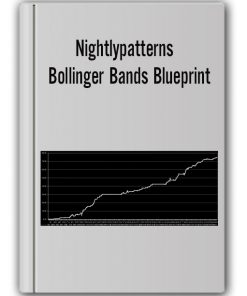Barbara Star – Detecting Trend Direction & Strength
Only registered users can download.
Please LOGIN/REGISTER
Author: Barbara Star
Starr is a graduate of the California State University, Northridge, from which she earned a degree in journalism. From 1979 to 1988, she was a correspondent for Business Week magazine, covering energy matters. She then worked for the news magazine Jane’s Defence Weekly from 1988 to 1997 covering national security and defense policy before joining ABC News as a producer, covering the Pentagon, for which she won an Emmy Award.[1]
In 2001, Starr joined CNN as the lead Pentagon correspondent, covering national security issues including the wars in Iraq and Afghanistan.
Detecting Trend Direction & Strength
This product is available
Traders use technical indicators to recognize market changes.
They look to indicators for signs of price direction, momentum shifts, and market volatility. Among the most sought-after indicators are those that identify price trends. Traditionally, moving averages serve that purpose, but they suffer from whipsaw action during price consolidations. However, there is another approach. This article shows how to combine two popular indicators to help traders detect not only trend direction but also trend strength.
When both indicators are plotted on the same chart, trend strength and trend direction become clear. The chart of AOL Time Warner (AOL) in Figure 1 illustrates how the two indicators complement each other. The ADX in the upper panel rose from April through May 2001, indicating a trending market. The MACD rose above its dotted trigger line and its zero line, showing that price direction was up. During July and August the ADX rose once again, but the MACD was then below its trigger line and its zero line, showing that a downtrend was in progress.
FIGURE 1: ADX AND MACD WITH AOL TIME WARNER (AOL).
The rising ADX in the upper panel does not differentiate between up- or downtrending price movements. Plotting the MACD just below the ADX makes the trend direction much easier to spot.
THE CONFIRMING PATTERN
Most traders prefer the long side of the market and look for an uptrending market. The confirming pattern identifies exactly that condition. When the ADX and MACD move up in unison, they confirm rising price direction; the Bristol-Myers Squibb Co. (BMY) chart in Figure 2 offers a good example of a confirming pattern. The ADX and MACD rose as price moved up strongly in September to December 2000.
When price changed direction in January 2001, both the ADX and MACD followed suit. The falling ADX was not indicating that a downtrend had begun; merely that it no longer could find a trend. In this example, the MACD showed that price was retracing its prior upward march. But sometimes when both indicators fall, price forms a sideways trading range, rather than the more pronounced downward move seen in this chart.
Be the first to review “Barbara Star – Detecting Trend Direction & Strength” Cancel reply
You must be logged in to post a review.
Related products
Secdution & Love
Forex & Trading
Forex & Trading
Forex & Trading
Forex & Trading
Forex & Trading












Reviews
There are no reviews yet.